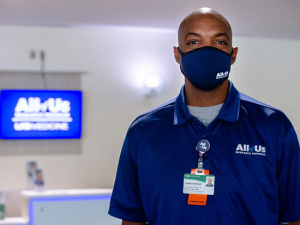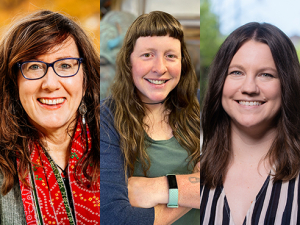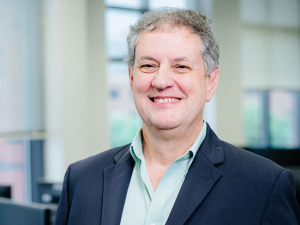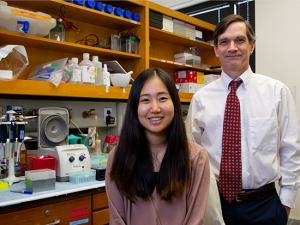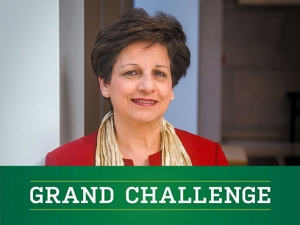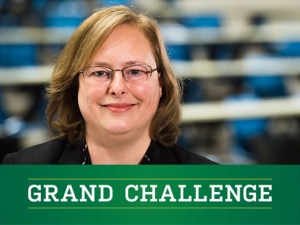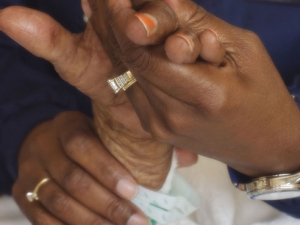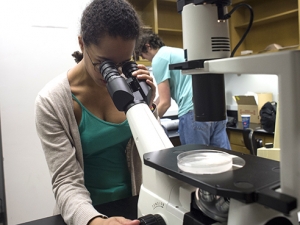Researchers are searching for strategies for breast-cancer prevention — from its genetic origin to its link to proper diet and exercise.
 Breast cancer is the most common cancer among women, excluding non-melanoma skin cancers, and it is the second leading cause of cancer deaths in women today. Worldwide, the American Cancer Society predicts about 1.3 million women will be diagnosed with breast cancer annually and more than a third will die from the disease; about 1 in 35 U.S. women die from it.
Breast cancer is the most common cancer among women, excluding non-melanoma skin cancers, and it is the second leading cause of cancer deaths in women today. Worldwide, the American Cancer Society predicts about 1.3 million women will be diagnosed with breast cancer annually and more than a third will die from the disease; about 1 in 35 U.S. women die from it.
Monica Baskin, Ph.D., and Dori Pekmezi, Ph.D., are examining the socio-cultural influence on the diets of black women in the Deep South and the effect regular physical activity can have in substantially reducing the risk for developing and dying from cancer.
Baskin, an associate professor in preventive medicine, is working with investigators and physicians in the Comprehensive Cancer Center.
“There’s growing evidence of the link between obesity and cancer, and African-American women in the Deep South have the highest rates of obesity and breast-cancer mortality,” Baskin says. “With respect to nutrition and prevention, there definitely is a history of evidence suggesting that eating lots of fruits and vegetables, reducing read meat intake and avoiding processed foods is helpful in preventing cancer.
“We know for sure that is not happening in the Deep South, particularly among black women.”
The diet factor
Cancer rates are 10 percent higher among African-Americans than Caucasians, but death rates are twice as high. Though the cause of the differences is unknown, some researchers suggest diet is the cause, but Baskin says the empirical evidence to support that claim is minimal at best.
She hopes to gather evidence by interviewing approximately 300 women in 22 counties in Alabama and Mississippi during the next three years. Women in the metro Birmingham and Hattiesburg, Miss., areas will be interviewed along with those in counties in the Black Belt and the Mississippi Delta.
“This combination of rural and urban women should give us diversity in terms of income and age,” Baskin says. “We really want to look at the social and cultural issues. After this initial, more qualitative work, we will follow up in those same counties with another set of 300 women. We will use behavioral surveys and capture information on their dietary intake to see if what the ladies said influences their diet really does.”
Findings from the study may better explain the limited success by black women in achieving recommended dietary intake and better inform future interventions for black women at greatest risk for obesity and other chronic conditions.
Baskin also directs a recently awarded U54 grant from the National Cancer Institute to work with the Deep South Network for Cancer Control — headed by Comprehensive Cancer Director Edward Partridge, M.D. — to determine if community strategies to supplement an individual weight-loss program will lead to greater success among overweight rural African-American women.
“To date, there are no published studies of multi-level weight-loss interventions for black women residing in rural communities,” Baskin says.
Co-investigators on the grant include Jamy Ard, M.D., assistant professor of nutrition sciences, and James Shikany, Dr. P.H., associate professor of preventive medicine.
“Both research projects focus on a social-ecological model of health behavior,” Baskin explains. “That examines whether it’s a function of you as an individual and your biological makeup and how your health behaviors are influenced by your family, community, the larger environment and policies. Each of these levels contain some potential influence on health behavior.”
Exercise is medicine
While diet plays a key role in cancer prevention, research shows regular physical activity can substantially reduce the risk for developing and dying from cancer. The strongest evidence, says Pekmezi, exists for breast and colon cancer, with possible associations for prostate, lung and endometrial cancer.
Pekmezi’s American Cancer Society Institutional Research grant looks specifically at black women, who report particularly high rates of sedentary behavior. Pekmezi’s research team conducted six focus groups this past summer to assess the physical activity barriers and facilitators for black women in the Deep South.
“We heard some interesting responses from women on what gets in the way of exercise, ranging from household and childcare responsibilities to how they don’t want to mess up their hair,” Pekmezi says. “We’ve collected this data, and we’re going to use it to form an intervention that specifically addresses the barriers to physical activity and cancer prevention for African-American women in the Deep South.”
Three of the focus groups were with community health advisors from rural counties and three focus groups were with community health advisors in urban counties. As expected, many of the barriers were different for each area.
For example, people who lived in rural areas said it’s tough for them to exercise because there are no fitness clubs close to where they live. Women in urban areas like Jefferson County said crime and safety in their neighborhoods often can be an issue.
“Overall the women described busy, inflexible schedules that might make attending center-based programs difficult and suggested that a home-based approach may be more appropriate for this target population,” Pekmezi says. “We certainly want their input and want to know what would be helpful and how we could work around the issues they face.”
Pekmezi is awaiting word for funding of a new grant to test the physical activity intervention that specifically addresses the barriers for African-American women in the Deep South. The intervention plan was informed by the focus group research.
In order to help reduce risk for diseases like cancer, Pekmezi says it’s important for all men and women, regardless of race, to exercise regularly — even if it’s nothing more than walking.
“You really need to avoid inactivity as much as possible,” she says. “All you need is 30 minutes most days of the week, and it can be moderately intense. It can be a brisk walk. There are numerous health benefits from brisk walking.”







